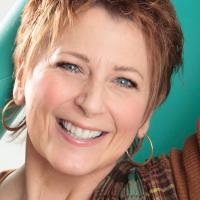
Deborah Burnett
ASID, AASM
Deborah Burnett, ASID, AASM, is an internationally recognized registered design professional, Subject Matter Expert (SME) in the field of Light + Health, and a member of the American Academy of Sleep Medicine. Serving on IES and CIE photobiology, daylight & health, and aging committees she is a highly regarded academic lecturer, international keynote presenter, and published author. Burnett is also a LightFair speaker who most recently presented in the 2020 virtual conference.
Design Services Inc. | Benya Burnett Consultancy | benyaburnett.com
[email protected]
Burnett reflects on what Staying Well means to her.
Personally, STAYING WELL is my directive for active engagement during daylight hours, and when the sun goes down, to remain calm, relaxed, and sleep well every night in a pitch-black dark room. It also implies that I extinguish all ceiling level lights after 8:00 PM, use a red ( 630 nm) night light for hallways and bathrooms during evening hours, and flood our bedroom with as much natural light as possible each morning even during the darkened winter months.
From a human evolutionary perspective I interpret STAYING WELL as describing the biological need for both dermal and ocular photoreception of varying dosing exposure levels of UV, UVvis, and IR throughout daylight hours, while at night, exposing skin and eyes to sufficient darkness levels capable of stimulating an opposite biological response; the basis of which posits ambient light as a survival stimulus necessary for a robust innate immune system, vigorous regulatory genetic expression, and healthy neuroendocrine response throughout every 24 hour period.
In my opinion the ecological viewpoint for STAYING WELL is similar for all life forms as the biological and cellular dependance upon ambient light is inextricably tied to a 24-hour cycle with seasonality adjustments dependent upon latitude. It is only when the cycle is interrupted or delayed that lifeforms, including humans, experience over time the opposite of wellness and thus STAYING WELL is not achievable.
From the vantage point of economic considerations, I recognize the term STAYING WELL as a mandate for exterior lighting professionals with projects located in pristine environments to go beyond glare mitigation and dark sky issues by focusing on minimizing the potential for light at night (LAN ) to impact local economies and irreversible disruptions to native species food sources. Case in point: A high profile multi-span bridge over a major marine waterway in an urban setting where tourism, fishing, and boating are world famous. By first considering lighting from an economic perspective with the potential to cause light-based marine life disrupted food chains, this decorative bridge lighting project circumvented a likely decline and possible destruction of a now thriving ecosystem whose demise would have devastated the local economy, citizenry livelihood, and overall urban vibrancy. Coupled with lighting specifications researched critically for SPDs scientifically suggested to be protective of photoperiod exposure limits for the primary food chain providers, zooplankton and eelgrass nesting sites located directly under the bridge, this artistic bridge lighting project will be a world class model for all waterway structures and shoreline environments.
Professionally, I interpret the words STAYING WELL as a call to action for practitioners, manufacturers, educators, and professional organizations to step up and go beyond our normal photometric silo. By recognizing, interpreting, and incorporating light-based research generated by seemingly disparate life science disciplines such as veterinary, horticultural, agricultural, zoological, and human medical research as necessary components of our professional skillset development, we would then be able to expand and prioritize our photometric knowledge for interpreting correctly Natures’ light prescription: a seasonally adjusted homeostatic balance between light and dark photoperiods converted to electric light applications suitable for any built environment or naturally pristine location.
Don’t miss this video demonstration by Deborah Burnett explaining the path light travels from your eye. Check it out here.

